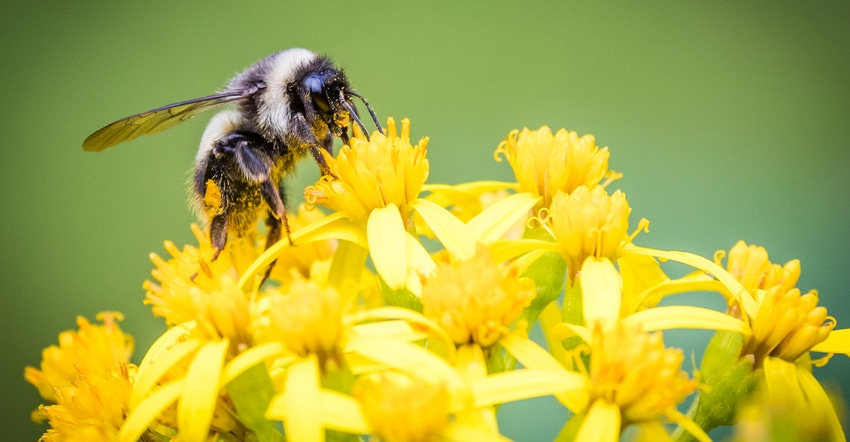November 5, 2019

A drive across Idaho is an eye-opening look at a diverse crop population. The state is known to raise more than 180 different crop types; and for many, there’s a critical workhorse — the bee. In southwest Idaho alone, there are more than 400 native bee species along with crops like alfalfa, pinto beans and fruit trees.
All thrive because of these busy workers moving from flower to flower, but bee ecosystems have a delicate balance.
Idaho researchers are working to gain a better understanding of what threats bee habitats face, as well as working to prevent their decline. Brad Stokes, a University of Idaho Extension educator, started a bee survey in 2018 to catalogue the species of bees found during different times of the year, and at different elevations in Elmore County, Idaho. Based on his findings, he hopes to show the region’s producers what they can do to help sustain pollinator populations.
Stokes explains that he wants to find out if the survey data can “tell us if there are recommendations we should make.” For example, changes in the bee community during different months may require adjusting how much pesticide is used during the season.
Recommendations might also promote more biodiversity in nectar, and in the wildflowers that farmers already plant near fields to feed native bees when crops aren’t in flower, Stokes notes.
Building a survey
The Bee Survey Research Project started in Elmore County in 2018 and included a 100-mile trap network documenting wild bee species. It incorporated four different ecosystems — agriculture, rangeland, urban and forest — and elevation differences ranging from 2,400 to 5,200 feet across the county.
Stokes notes that the state’s landscape is diverse, and that the survey area “represents southwest Idaho, in a way. We should be able to make observations from Elmore County that link to the entirety of southwest Idaho.”
The goal is to document different species of pollinators, specifically bees, in each ecosystem and at each elevation. Though bees are often thought of as actively pollinating in the spring, Stokes wanted a more comprehensive picture of how pollinator species complexes cycle and change through the year, so the researchers set traps in 12 locations on three dates selected for cataloging pollinators.
Stokes explains that the data collected is extensive, with more than 1,200 individuals gathered in the traps. They’re being cataloged by genus and species to better understand the population.
There are many questions the researchers may be able to answer based on the survey, including the types of species that inhabit any given area and which flowers they choose to pollinate. He notes that as elevation rises, different native plants are present, which could change the complex of pollinators present. “We could see if that ecosystem harbors an even sweep of bees,” he says.
One goal of the work is to establish baseline data for the state’s pollinators. “Pollinator decline affects Idahoans, and we can’t say something is changing over time unless we understand what bee species we have now,” Stokes says.
Stokes is working to publish the work in scientific journals, and plans to duplicate the survey in 10 years to compare the bee species changes in southern Idaho to tell a deeper story. You can learn more about the project at uidaho.edu/extension/pollinator.
Source: University of Idaho. The source is solely responsible for the information provided and is wholly owned by the source. Informa Business Media and all its subsidiaries are not responsible for any of the content contained in this information asset.
You May Also Like




